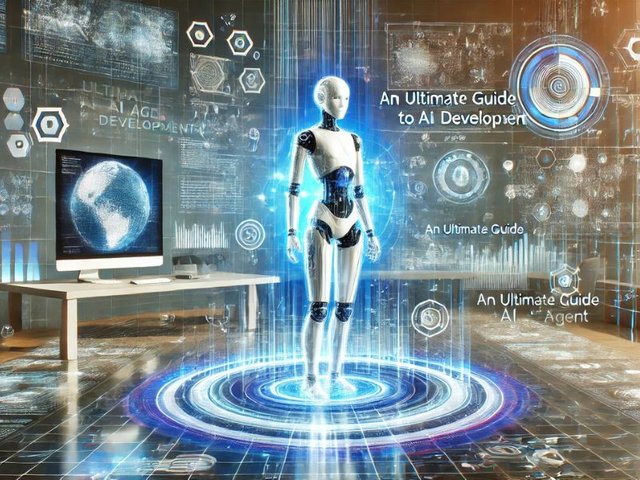The Ultimate Guide to AI Agent Development: From Concept to Deployment

Artificial Intelligence (AI) agents are revolutionizing industries by automating complex tasks, enhancing decision-making, and improving efficiency. From virtual assistants to autonomous trading bots, AI agents are becoming an integral part of our digital ecosystem. This guide explores AI agent development from concept to deployment, helping businesses and developers build intelligent solutions that deliver real-world impact.
Understanding AI Agents
An AI agent is a software entity that perceives its environment, processes information, and takes actions to achieve specific goals. These agents can be reactive (responding to inputs) or proactive (making decisions based on past data and predictive analytics).
Types of AI Agents
Simple Reflex Agents – React to inputs based on predefined rules (e.g., chatbots).
Model-Based Agents – Maintain an internal model of the world and update it over time.
Goal-Based Agents – Make decisions by considering future consequences.
Utility-Based Agents – Optimize actions based on utility functions.
Learning Agents – Use machine learning techniques to improve over time.
Key Steps in AI Agent Development
1. Define the Purpose and Objectives
Before starting development, clearly define the problem the AI agent will solve. Consider:
What task will the AI agent automate or improve?
Who are the target users?
What data will it require to function?
How will success be measured?
2. Select the Right AI Techniques
AI agents rely on different technologies based on their function. Common techniques include:
Machine Learning (ML) – For pattern recognition and decision-making.
Natural Language Processing (NLP) – For understanding human language.
Reinforcement Learning (RL) – For adaptive decision-making.
Computer Vision – For image and video analysis.
3. Gather and Prepare Data
AI agents require high-quality data to learn and operate efficiently. Steps include:
Collecting relevant structured and unstructured data.
Cleaning and preprocessing data (removing duplicates, handling missing values).
Splitting data into training, validation, and testing sets.
Augmenting data to improve model robustness.
4. Develop the AI Model
Choose the right framework (e.g., TensorFlow, PyTorch, OpenAI Gym for RL).
Train the AI model using appropriate algorithms.
Fine-tune hyperparameters for optimization.
Evaluate performance using accuracy, precision, recall, and F1-score.
5. Implement the AI Agent Architecture
AI agents consist of different components, including:
Perception Module – Gathers data from sensors, APIs, or user inputs.
Decision-Making Engine – Uses ML models or rule-based logic to determine actions.
Action Module – Executes decisions (e.g., responding to queries, trading stocks, etc.).
Feedback Loop – Continuously learns and improves performance over time.
6. Integrate with Applications and Systems
AI agents need to be embedded into existing workflows. Key integration considerations include:
APIs for seamless data exchange.
Cloud platforms (AWS, Google Cloud, Azure) for scalability.
UI/UX design for user interaction.
Security and compliance measures.
7. Testing and Validation
Testing ensures reliability and efficiency. Techniques include:
Unit Testing – Testing individual components.
A/B Testing – Comparing agent versions for performance.
Stress Testing – Evaluating scalability under high loads.
User Testing – Collecting feedback from real users.
8. Deployment and Monitoring
Deploy the AI agent in a production environment and continuously monitor performance. Best practices include:
Using CI/CD pipelines for seamless updates.
Deploying on serverless or containerized infrastructure (e.g., Docker, Kubernetes).
Implementing performance monitoring tools (e.g., Prometheus, ELK Stack).
Continuously refining models with new data.
Future Trends in AI Agent Development
Autonomous AI Agents – Self-improving agents using unsupervised learning.
AI Ethics and Fairness – Bias detection and responsible AI development.
Multi-Agent Systems – Collaboration between multiple AI agents for complex tasks.
Quantum AI Agents – Leveraging quantum computing for superior performance.
Conclusion
AI agent development is transforming industries by providing intelligent automation solutions. By following a structured development approach—from defining objectives to deploying and refining models—you can build AI agents that deliver meaningful business outcomes. Whether you're developing AI-powered chatbots, autonomous trading systems, or smart assistants, this guide serves as a roadmap to building efficient, scalable, and impactful AI agents.